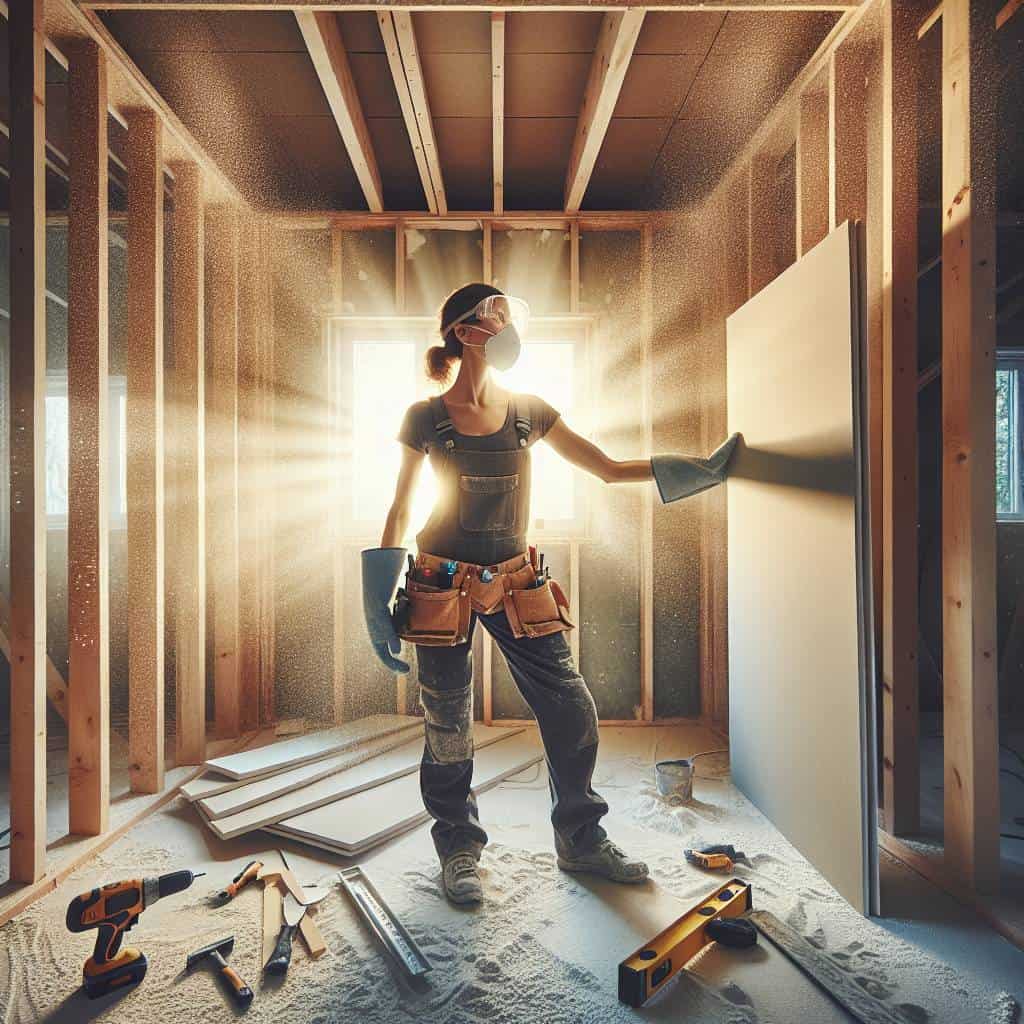If you’ve ever found yourself staring at a blank wall, contemplating the madness of existence, well, welcome to drywalling. My first tango with drywall was less of a dance and more of a foot-stomping, wall-punching disaster. I remember standing in a cloud of dust, cursing at a sheet that refused to align with my vision—or the studs, for that matter. It’s a bit like trying to wrestle a greased pig into submission—frustrating, messy, and inevitably humbling. But here’s the kicker: once you get past the chaos, there’s a strange satisfaction in watching those walls take shape. Like sculpting with a hammer and a bucket of mud.

So, let’s get down to the nitty-gritty of taming those stubborn sheets. I’m not promising a zen-like drywall experience, but I’ll guide you through the essentials: hanging, taping, mudding, sanding, and finishing. We’ll tackle the art of making your walls look like they weren’t just slapped together in a fit of rage. And when it comes to repair? I’ve got a few tricks up my sleeve that’ll make you look like a pro—or at least, someone who knows which end of the trowel to hold. Roll up those sleeves, and let’s dive into the world of drywall, warts and all.
Table of Contents
When Hanging Drywall Feels Like Wrangling a Wild Beast
So you’ve decided to hang drywall. Congratulations, you’ve just signed up for a dance with a beast that’s part puzzle, part endurance test. Imagine wrestling a stubborn mule that refuses to budge until you coax it into place, and you’ll have an inkling of the chaos that is hanging drywall. It’s not just about getting those massive sheets of gypsum up on the walls. It’s about defying gravity while juggling a board that seems to have a mind of its own. You’ll need a buddy, a bit of muscle, and maybe a few choice words when that slab refuses to fit the way you want. Because drywall has this uncanny ability to warp, twist, and turn, testing your patience and your understanding of geometry all at once.
But here’s where things get really wild. Once you’ve wrestled that beast onto the wall, you’ve got to tame it. Enter taping, mudding, and sanding—your trusty tools in this drywall rodeo. Taping is like stitching up the beast’s wounds, covering the seams with a joint compound that dries like the hardest armor. Mudding comes next, smoothing out the rough edges, trying to make it all look like a seamless, flat expanse. And sand, oh sand. It’s like trying to polish a boulder into a pebble. Dust fills the air, your arms ache, and yet you persist, because you know that beneath this mess, a smooth wall waits to emerge. It’s a dirty job, but there’s a certain satisfaction in taming that beast and turning chaos into a blank canvas ready for paint.
The Art of Wall Alchemy
Transforming a bare frame into a wall is like coaxing a symphony from chaos—hanging, taping, mudding, sanding, finishing. It’s not just construction; it’s coaxing hidden strength from a sheet of paper and powder.
The Final Coat of Chaos
Like the last bolt on an engine rebuild, there’s a certain satisfaction in stepping back to admire a wall you’ve tamed with your own two hands. It’s not just about the drywall—it’s about the journey from chaos to calm. Hanging, taping, mudding, sanding, finishing, and the occasional repair—it’s all there, shaping you as much as you shape it. And sure, maybe your lungs are still filled with dust and your patience was tested more than a few times, but there’s a kind of beauty in that struggle.
When I think about the mess and the madness, it reminds me of the way we tackle life’s wild rides. Each step requires its own set of skills, a little bit of grit, and a willingness to get dirty. Whether it’s a wall or an engine, or even just trying to make sense of the everyday grind, it’s all about finding harmony in the moving parts. So, the next time you’re staring down a blank wall or a broken-down car, just remember: you’ve got the tools and the know-how to make it purr. And maybe, just maybe, that’s exactly what makes it worth the dust and the sweat.